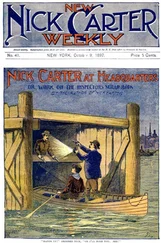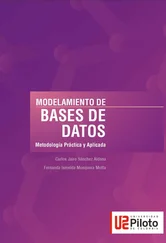By 2006, it was clear that the Combat Meth Act would require two things in order for it to work. First, the Mexican government would have to stand up to the DTOs by making it more difficult for them to import bulk pseudoephedrine. Second, the U.S. government would have to stand up to Big Ag and Big Pharma by forcing the former to curtail its employment of illegals and the latter to make cold medicine from something other than pseudoephedrine.
What’s interesting is that the man who stood at the nexus of the immigration debate raging throughout the U.S. government in 2005 and 2006 is the very congressman who all but single-handedly pushed the Combat Meth Act through: Representative Mark Souder, Republican of Indiana. At the same time Souder was working on the meth legislation, he was an outspoken proponent of President Bush’s plan to solve the “border issue” by heavily reinvesting in technological strategies like eye scans and drone planes. In Souder’s politics, it’s possible to see almost all of the ironies and complexities of the meth epidemic in stark relief.
Back in October 2005, I went to visit Representative Souder in Washington, D.C. Souder’s district, which includes Fort Wayne, in northeastern Indiana, is home to several poultry plants run by Tyson. The area is much like that around Ottumwa and Oelwein: overwhelmingly agricultural, with one dominant type of employment and many smaller places that have been struggling economically since the mid-1980s. The Third District is also, as Souder put it, “defined by its meth problem.”
At the time, a year before the passage of the Combat Meth Act, Souder was the chairman of the Congressional Subcommittee on Criminal Justice, Drug Policy, and Human Resources as well as a member of the Homeland Security Committee. As such, he had three principal obsessions: meth, immigration, and terrorism. The immigration debate had reached a boiling point within the Republican Party, even as President Bush was putting together a policy that would be put forth in his January 2006 State of the Union address. Bush would recommend the use of technology and National Guard troops—along with fence construction—to secure the largely uninhabited and invisible “line” between Mexico and the United States. Souder, like many representatives of both parties, insisted the president was right: technology would stop illegals from entering the country.
Souder took for granted American’s dependence on immigrant labor—that is, the idea that large companies must be able to pay as little as possible in order to remain relevant in a global economy. Souder also worried deeply about immigration as a contentious divide that threatened to tear the Republican Party in half. That day in his office, Souder described the party’s growing schism this way: some Republicans saw immigrants as a necessary evil, and others were on what Souder called the “We Don’t Want Them Here” side. The former camp included businesses like the meatpacking plants. On the other side, said Souder, were the people who think the illegal Mexicans and other immigrants take jobs from Americans. “Not necessarily racist,” said Souder, “but they don’t want them around.”
It was difficult to get Souder to give his own take on immigration. At one point, he said, “I’m on the side that says that immigrants in this country have always had the crappiest jobs.” Later, he told a story about his great-aunt Elly, who come to Indiana from Germany, the point of which was that two people can look at one thing and see great differences. When pressed, though, Souder framed the debate first by blaming U.S. workers for their unwillingness to do hard jobs—a contention for which he offered no evidence—and then by highlighting the power of the large corporations that import foreign labor. As he put it, “Maybe Americans will do these jobs. Or maybe they won’t, and we have to have Mexicans and OTMs [other than Mexicans] to do them. Either way, it doesn’t matter, because if we make the companies pay higher wages, they’ll go offshore. It’s as simple as that. And when that happens, we’re not only going to lose the six-dollar jobs; we’ll lose the twelve-dollar and the quarter-million-dollar jobs, too. That’s just reality.”
When I suggested the often-repeated potential solution of fining companies that employ illegal immigrants while heavily taxing the products of those that move offshore, Souder ignored my suggestion. He instead recited from memory the statistics that had become the pivot points of 2005’s national debate on immigration: three hundred thousand illegal immigrants crossing the Mexican border each year; at least one million undocumented people living in the United States (according to the Pew study, the number is twelve million); rampant identity theft; overburdened hospitals going bankrupt by treating people who can’t pay their medical bills. Souder said that he—along with the Republican Party and the support of many Democrats—was advocating heavy new investments in eye scans and computerized fingerprint images to keep track of people who enter the country. He said this would ensure that companies employing guest workers would be better equipped to keep track of their employees. He reiterated the need for infrared sensors and unmanned planes—the very things advocated by Tom Vilsack, then the Democratic governor of Iowa, and Republican senator Jim Talent of Missouri, both of whom I’d also recently interviewed.
My visit in 2005 to the Nogales, Arizona, border crossing underscored the ridiculousness regarding the idea that illegal aliens desperate enough to risk their lives crossing the desert will stop at checkpoints for eye scans. Given the distance between the checkpoints as well as the harshness of the terrain, one could understand how the term border checkpoint is oxymoronic. The idea that someone in this environment would go out of his way to be checked—or would be stopped by a fence—is beyond reason. Further, my private conversations with Immigration and Customs Enforcement agents served to reiterate doubts about the usefulness of drone planes sending immigrants’ geographic coordinates to ICE agents, when in fact the agency is hopelessly understaffed. Really, though, spending time with illegal immigrants in Iowa is all it took to convince me that, as long as there are jobs, there is no reason to think people will not cross the border to get them. In that way, talk of increased border technology seems only to work in tandem with—and as a cynical addendum to—an utter lack of interest in removing the real impetus to walk across the desert: Cargill-Excel in Ottumwa is always hiring.
Representative Souder, who admits he has never been to Nogales, Arizona, is a strong supporter of DEA and law enforcement. The day we spoke, he said he knew all about the DTOs. He’d been following Steve Suo’s stories in the Oregonian , which implicitly linked the rise of meth to the rise of the Mexican DTOs. Souder had lauded Suo, and had used his reporting as the foundation of his arguments before Congress that something must be done about meth, even veering wide of party lines by very publicly taking to task President Bush’s drug czar, John Walters. Souder was, in that way, as informed and knowledgeable regarding meth as any member of the United States government. If he was unwilling or unable to see the complexities of the issue, I thought, who would be? When our time was up, I asked Souder, as I’d done at the beginning of the interview, if he saw any connection between immigration policy, small-town economies, the meth problem, and Big Agriculture as it existed in a place like Indiana’s Third District.
Souder paused a long time before he said, “My constituents tell me we have two problems in northern Indiana: meth and immigration. As far as how they’re connected, I don’t know. I just deal with what I’m given. Like I say all the time, I’m just a weather vane.”
Читать дальше












